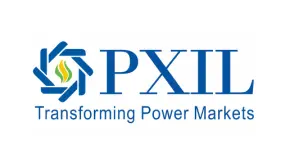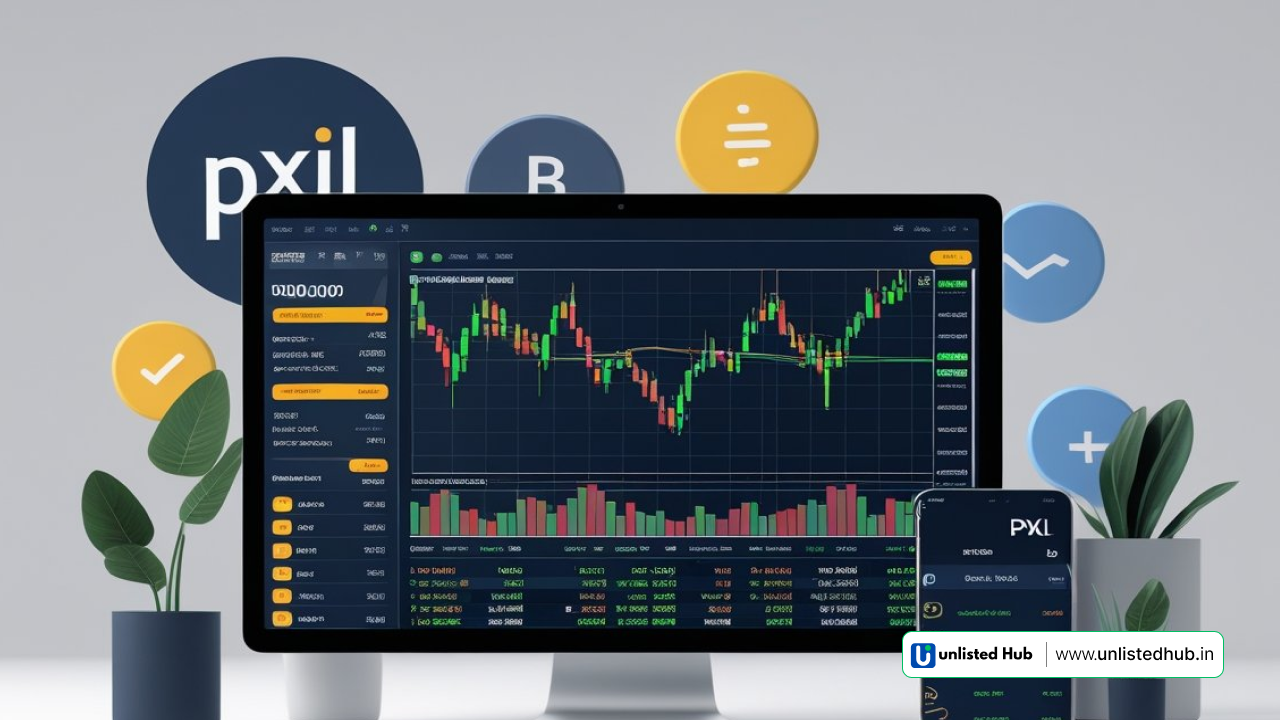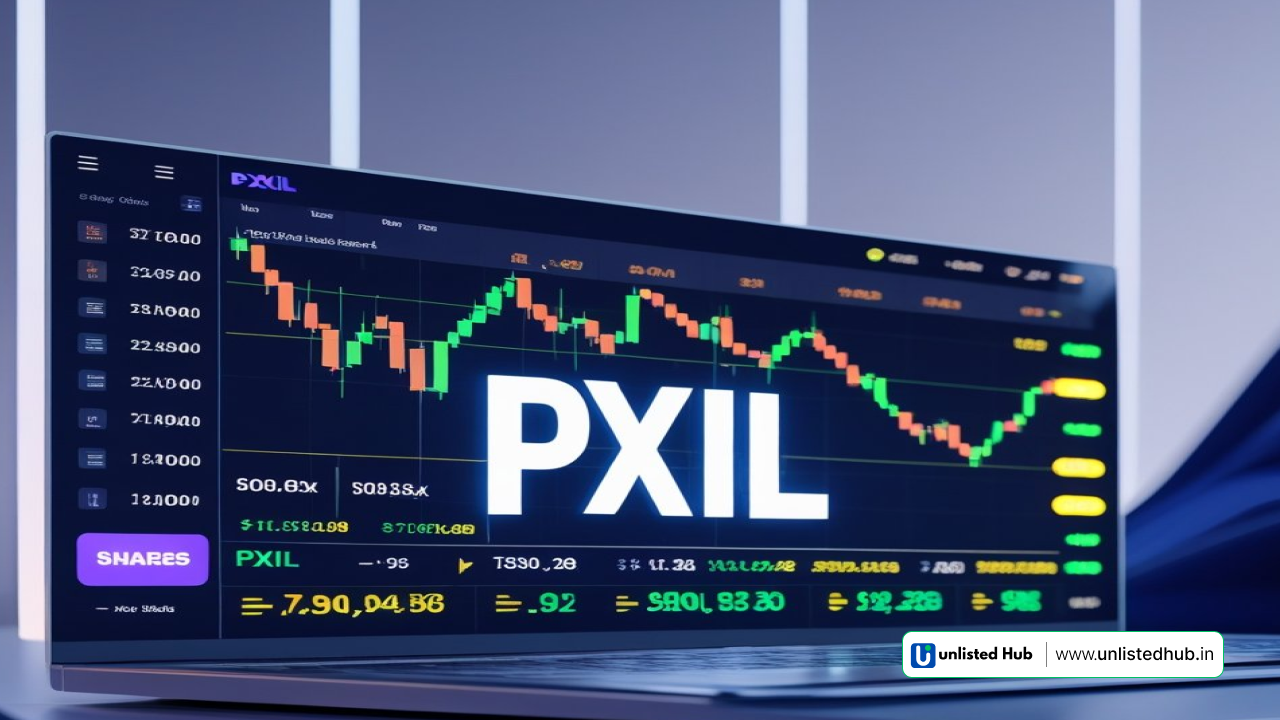
About Power Exchange India Limited (PXIL)
Company Overview
PXIL(Power Exchange India Limited), India’s second electronic power exchange, was founded in 2008 as a joint initiative of NSE and NCDEX to foster transparent power trading. It facilitates short‑term electricity transactions—spanning Day‑Ahead, Contingency, Intra‑Day/Weekly, and longer Term contracts—alongside the trading of Renewable Energy Certificates (RECs).
With the launch of its PRATYAY platform in January 2020, PXIL Shares enhanced technological capabilities, enabling real‑time trading, readying for cross‑border transactions, and offering robust risk and settlement modules.
Financially, the company has transformed from debt-laden to profitable, reporting ₹63 Cr revenue and ₹22.1 Cr PAT for FY24. It maintains a healthy ROE (~24%), modest debt, and EPS growth from ₹2.7 to ₹3.8.
PXIL Shares trades at a premium P/E of ~90×, reflecting growth expectations tied to market reforms like MBED and market coupling, and institutional investments—including a 5% stake from Norwest (Apr 2025). While its rival IEX dominates volume, PXIL is rapidly gaining traction in green energy, Term-Ahead segments, and potential carbon credit markets. Its founders and diverse promoters provide strong governance and credibility.
Quick Compact Company Overview PXIL
| Aspect | Details |
|---|---|
| Name | Power Exchange India Limited (PXIL) |
| Established | 2008 |
| Promoters | NSE & NCDEX (Joint Initiative) |
| Core Business | Short-term power trading, RECs |
| Digital Platform | PRATYAY (2020) – Real-time, scalable, cross-border, carbon-ready |
| FY24 Revenue | ₹63 Cr |
| FY24 PAT | ₹22.1 Cr |
| EPS Growth | ₹2.7 → ₹3.8 (FY22–FY24) |
| ROE (FY24) | ~24.05% |
| Debt/Equity (FY24) | 0.16 (Low leverage) |
| P/E Ratio (2025) | ~90× (High growth valuation) |
| Institutional Backing | NSE, NCDEX, PFC, Norwest (5% in Apr 2025) |
| Market Position | #2 after IEX; strong in green & term segments |
| Expansion Areas | Green power, carbon credits, PRATYAY upgrades, MBED, market coupling |
Financial Overview :
PXIL Shares has shown strong financial performance over the last few years, supported by an asset-light, digital business model. The company has grown consistently in terms of revenue, profits, and return on equity, with low debt and stable margins.
PXIL has demonstrated strong and stable financial performance over the last three years, supported by operational efficiency, an asset-light model, and growing market traction :
| Metric | FY22 | FY24 | FY25 (Latest) |
|---|---|---|---|
| Revenue (₹ Cr) | 40–54 | 54–63 | — |
| PAT (₹ Cr) | 15.7–22 | 22.1 | ~22 |
| EPS (₹) | 2.7 | 3.7–3.8 | 3.76 |
| ROE (%) | 24–32 | 24.05 | — |
| PAT Margin (%) | 39–45 | 41 | 40.74 |
| Debt/Equity (×) | — | 0.16 | 0.21 |
PXIL Shares growth runway is fueled by rising volume in power trading (regional increase from ~5,900 to ~8,900 MU in FY23) and entry into green Term-Ahead and REC markets.
A diversified revenue base, expanding product offerings, and tech-driven operating leverage underpin consistent margin profile, low debt, and strong return metrics—positioning PXIL Shares as a potential multibagger investment on an exit event like IPO.
Key Highlights:
-
Stable Growth: Revenue and profit have grown consistently year-over-year.
-
High Margins: PAT margin remains strong at over 40%, showing good profitability.
-
Low Debt: The company operates with minimal leverage (Debt/Equity ~0.21 in FY25).
-
Strong ROE: Return on equity around 24% indicates efficient use of capital.
-
High Valuation: PXIL Shares trades at a P/E of ~90×, reflecting investor confidence and future growth potential.
Why Invest in PXIL?
Power Exchange India Limited (PXIL) is one of India’s leading digital electricity trading platforms, offering a rare opportunity to invest in the rapidly evolving energy market. Backed by major institutions like NSE, NCDEX, PFC, and Norwest Venture Partners, PXIL Shares combines financial strength with long-term growth drivers.
12 Reasons to Consider Investing in PXIL
1. Strong Institutional Backing : Supported by major entities like NSE, NCDEX, PFC, and Norwest (5% stake as of Apr 2025), ensuring credibility and stability.
2. High-Margin, Asset-Light Model :
Operates digitally with low fixed costs, resulting in strong margins and efficient scalability.
3. Consistent Profitability & Zero-Debt :
Proven track record of profits with minimal debt, reflecting financial discipline and low-risk operations.
4. Robust Return on Equity (ROE ~24%) :
Delivers high returns on shareholder capital, showcasing strong capital efficiency.
5. Impressive Growth in Revenue & PAT :
Year-on-year financial growth with solid fundamentals and expanding market presence.
6. First-Mover in Green & Term Markets :
Gaining early traction in renewable and Term-Ahead segments where future demand is rising.
7. Regulatory Tailwinds: MBED & Coupling :
Poised to benefit from major market reforms like Market-Based Economic Dispatch and market coupling.
8. Scalable Digital Platform – PRATYAY :
Technologically advanced platform enables high-speed, reliable trading with expansion capability.
9. Entry into Carbon Credit Trading :
Expanding into the high-potential carbon trading space, aligning with climate policy and net-zero goals.
10. Scarcity Premium from Institutional Demand :
Limited investment access in this space drives strong demand among institutions.
11. IPO Potential as a Revaluation Trigger :
Future listing could unlock significant shareholder value and market visibility.
12. Backed by Green Energy Megatrend :
Long-term structural shift toward renewables supports sustained future growth.
PXIL – Business Segment Overview
| Segment | Description |
|---|---|
| Day-Ahead Market (DAM) | Trading of electricity for next-day delivery. Helps plan power use based on daily demand. |
| Intra-Day & Contingency | Real-time and short-notice power trading for sudden demand or supply changes. |
| Term-Ahead Market (TAM) | Weekly, daily, or monthly contracts. Offers flexibility for future power planning. |
| Renewable Energy Certificates (RECs) | Trading of certificates proving renewable power generation to meet green targets. |
| Energy Saving Certificates (ESCerts) | Certificates for energy savings under PAT scheme; promotes industrial energy efficiency. |
| Green Term-Ahead Market (GTAM) | Short-term trading of green electricity (solar, wind). Fast-growing segment. |
| Cross-Border Trading (Upcoming) | Platform-ready for electricity trade with neighboring countries (future growth area). |
| Carbon Credit Trading (Developing) | PXIL Shares is working on enabling trading in carbon credits under India’s Net-Zero mission. |
PXIL Shares operates via multiple segments:
– Physical Power Trading: Includes Day-Ahead, Contingency, Intra-Day, Weekly, and Term-Ahead contracts for physical delivery, enabling commercial and industrial consumers/DISCOMs to optimize power costs through exchanges.
– Green-Term Ahead Market (GTAM): Launched in 2021, facilitating longer-tenure green power deals to meet Renewable Purchase Obligations.
Renewable Energy Certificates (RECs) :Platform for solar and non-solar REC trading at market-determined rates.
– Platform Services: Fee-based model covering listing, registration, and usage of PRATYAY tech.
– Real-Time & Cross‑Border Trading (RTM): Active product development, awaiting regulatory guidelines.
– Futures & Carbon Trading (coming soon): Prepped to host electricity futures and carbon credits, aligning with net-zero goals.
The platform’s modular architecture enables rapid introduction of new contracts, bolstered by digital risk management and robust settlement frameworks. Platform revenue is fee-based, while transaction revenue scales with electricity volume traded.
Reforms such as MBED, market coupling, and REC expansion enable new segments. Cross-border and real-time trade initiatives are underway for future scaling.
Subsidiaries & Partnerships – PXIL
– As of 2025, PXIL Shares has no direct subsidiaries but operates through a strategic partnership model supported by strong institutional promoters.
– It was founded as a joint venture of NSE and NCDEX, with additional support from Power Finance Corporation (PFC), contributing financial and sectoral expertise.
– In April 2025, Norwest Venture Partners acquired a 5% stake, enhancing PXIL’s institutional credibility and capital strength.
– PXIL Shares collaborates actively with CERC, state discoms, government agencies, and renewable energy players, as well as industrial consumers and power traders.
– This model ensures robust governance, regulatory alignment, and broad market access, even without owning subsidiaries.
– PXIL Shares is primarily a standalone operating company without wholly‑owned subsidiaries, focusing on exchange operations. Its shareholder consortium functions similarly to partnerships:
– Promoters: NSE (~29%), NCDEX (~24%), PFC, state utilities (Gujarat Urja, West Bengal DISCOM), Tata Power Trading, GMR, JSW Trading—totaling a diversified institutional base.
– Strategic Minority Investor: Norwest Venture Partners took a 5% stake in April 2025, validating PXIL’s growth strategy.
– PXIL Shares partners with clearinghouses, grid operators (POSOCO, SLDCs), and CERC for regulatory compliance.
– It collaborates with tech firms for platform development and explores blockchain pilots for peer-to-peer energy trading and carbon markets.
– Joint projects include market coupling initiatives with IEX and PTC India, while advisory partnerships are in place for cross-border trade protocols and futures market structuring.
– Although there are no direct subsidiaries in pure financial or exchange verticals, its shareholder structure serves as a strong governance foundation.
– Strategic partnerships across the power and financial ecosystem augment PXIL Shares product penetration, technological agility, and geographic expansion.

– Industry experts and analysts view PXIL Shares as a critical disruptor to IEX’s dominance. The market coupling and MBED reforms expected to launch in 2025–26 could significantly level the playing field.
– PRATYAY’s flexible architecture and PXIL’s green & long‑tenure contract strategy position it well for participation growth.
– Trading volume has grown ~50% year-over-year, increasing to ~8,900 MU in FY23. Green and term contracts account for expanding share.
– Norwest’s investment (Apr 2025) signals strong confidence from global investors in PXIL’s role in India’s energy transition .
– Challenges include IEX’s network effects, regulatory risk, and unlisted liquidity constraints. However, with zero debt, high earnings quality, and powerful governance, PXIL Shares is seen as a high‑reward play if reforms continue. Analysts emphasize it’s a long‑term bet—success depends on execution of coupling, market reforms, and volume capture. According to one expert:
“As India’s energy market liberalizes, PXIL can emerge as a force, especially in green and term products—it’s not a linear investment, but a multi‑year structural play.”
Other Investors Search For:
PXIL share price today || PXIL unlisted share price || Power Exchange India unlisted shares || How to buy PXIL shares || PXIL IPO plans 2025 || PXIL financial performance FY24 || PXIL valuation before listing || PXIL trading platform overview || PXIL pre-IPO investment demand || PXIL lock-in period || PXIL EPS and P/E ratio || PXIL FY22–24 net profit || PXIL company overview || PXIL Day-Ahead Market PXIL || PXIL Renewable Energy Certificates trading
Management
Chairman
Ashok Sethi
MD & CEO
Satyajit Ganguly
Power Exchange India Limited (PXIL)
Power Exchange India Limited (PXIL)
Registered Address
- ISIN: INE03N601010
- PAN: AAECP6452C
- 9th Floor, 901 , Sumer Plaza, Marol Maroshi Road, Marol Andheri (East), Mumbai 400059, India
Faqs
Frequently Asked Questions
No, it’s unlisted; shares trade in the unlisted market via platforms like Unlisted Zone.
Historically between ₹345 and ₹530/share; fluctuates by lot and demand.
Through unlisted share platforms or privately via promoters/institutional investors.
Reflects growth premium, limited supply, green energy potential.
IEX is the market leader (~90–95% share); PXIL is smaller but focused on green/term markets and reforms.
Regulatory reform allowing uniform pricing across exchanges in the same delivery area.
MBED, coupling, REC/futures, carbon credit markets, cross‑border and real‑time trading.
Promoters include NSE, NCDEX, PFC, Tata Power, GMR, JSW. Norwest holds 5%.
Yes—earned ₹22.1 Cr PAT on ₹63 Cr revenue in FY24; margins ~35–41%.
Liquidity, regulatory delays, competition from IEX, unlisted valuation volatility.
It’s a potential path; current institutional interest & reforms could drive a listing in 1–2 years.
Track CERC/SEBI policy, trading volume trends, unlisted pricing platforms, and stakeholder presentations.


